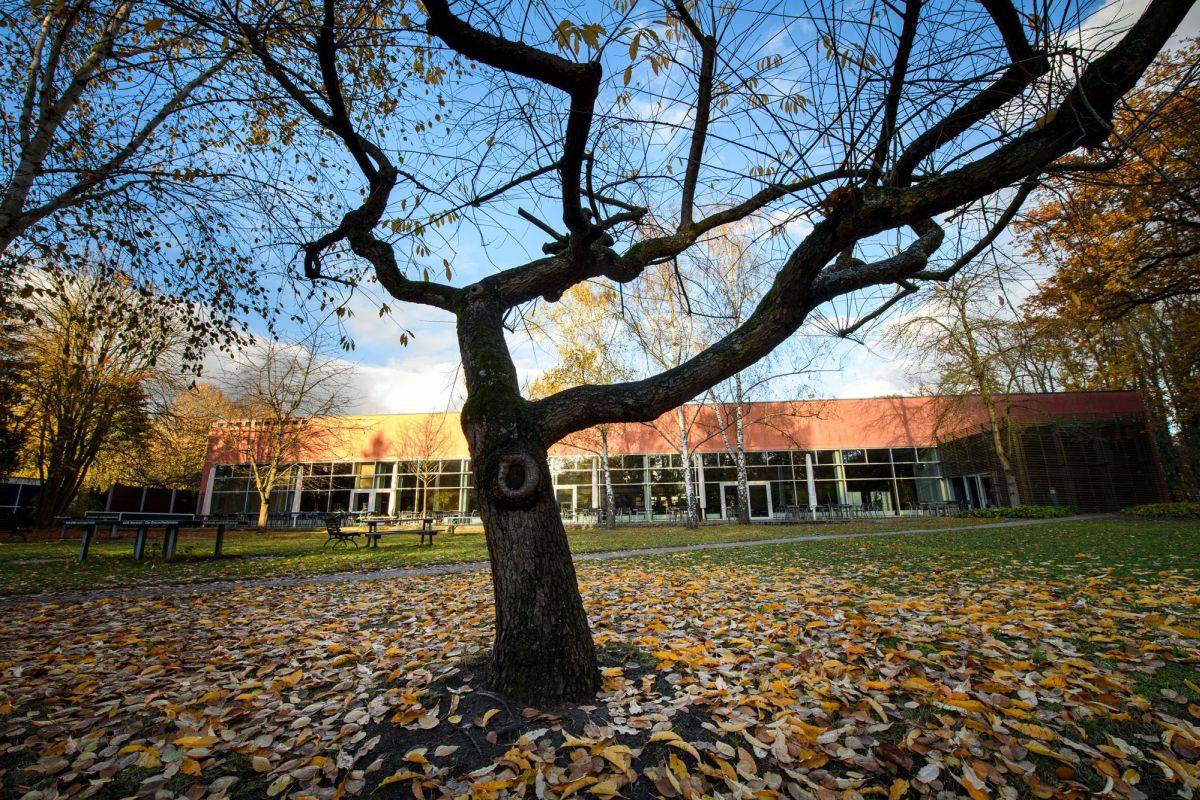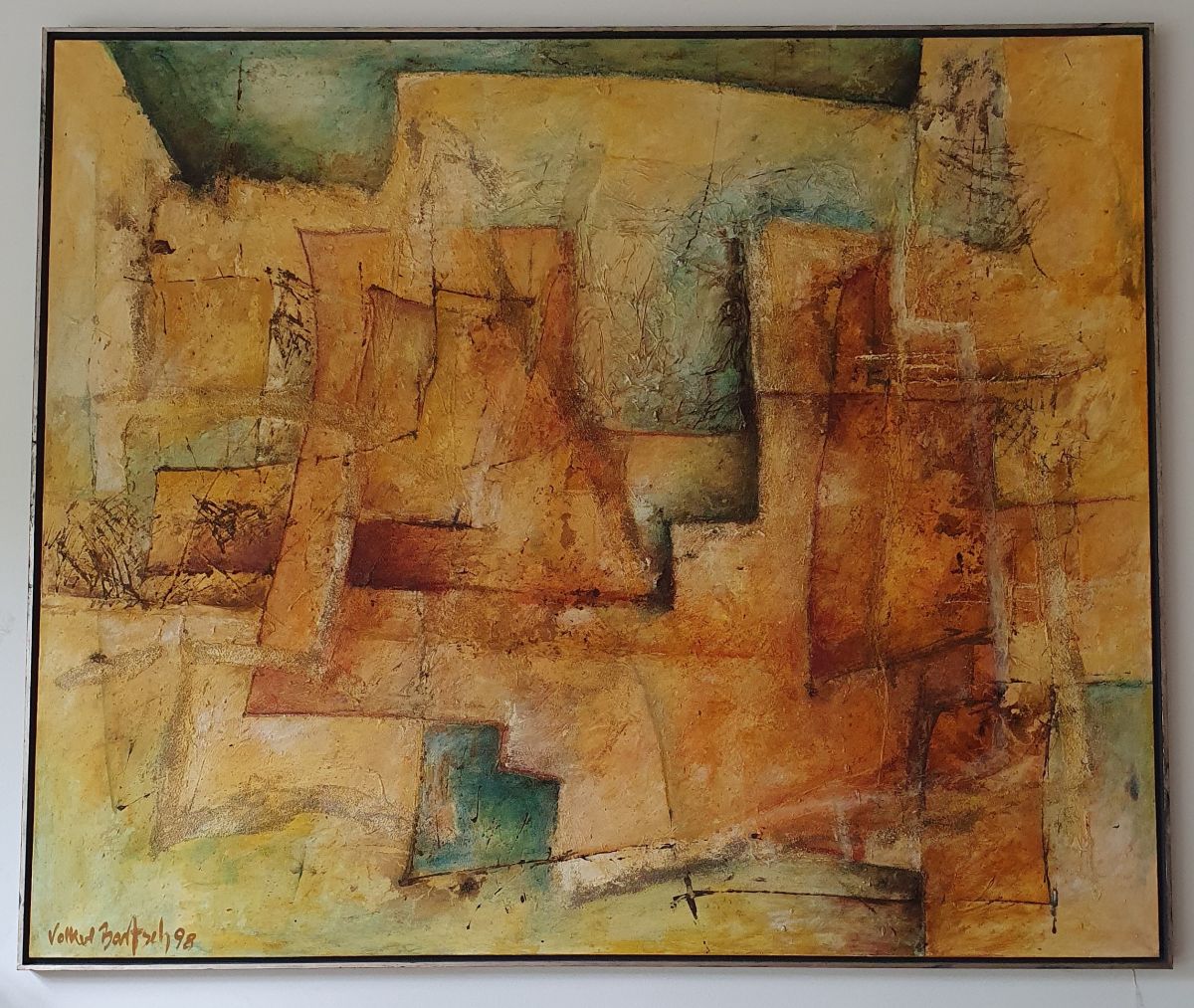19UE 2
Volker Bartsch
1998, Tempera, bronze dust and silk paper on canvas

From the terrace in front of the cafeteria, the next work of art can be seen through the window at the left front of the hall. The painting UE 2 by the German painter, graphic artist and sculptor Volker Bartsch.
Information about Volker Bartsch's life can be found in the article about his bronze sculpture "UE 1", which is exhibited in Arnold Graffi house.
Bartsch is best known for his large sculptures exhibited in public spaces. In addition, Bartsch's oeuvre also includes numerous graphics, etchings and paintings. "In contrast to sculptural work, with painting and in painting I can express myself much more directly, spontaneously and also have the results readable much faster" (1).
The painting UE 2 is part of the group of works "Magic of Gates", which deals with real and fictional transitions and spaces. Together, the works in this group represent Bartsch's efforts to transport onto canvas the mental and creative spaces that are crucial to his creative process.
The painting UE 2 "basically belongs to the sculpture" UE 1, Bartsch says. "I first make the graphic and I draw the idea, then I deepen the ideas (...) through gouaches and then I make the painting, (...) a spatial representation that is two-dimensional."

For the painting, Bartsch used materials from the production of the bronze sculpture. "I build myself a framework by means of materials from the sculpture in the form of contours, of lines that result in braiding across the canvas into which I incorporate areas of color. These color surfaces are transparently layered on top of each other, so that always a new entry into these imaginary free spaces is possible, depending on the light and the mood. This application of colors takes place through a rhythmic almost gestural painting, so that the physical aspect, among other things, is an important complementary factor to make these images vibrate." (1)
The goal, according to Bartsch, was to create "an illusion of spatiality." As in the case of UE 1, UE 2 also asks to change perspective. "One can (...) even in the dark (...) still feel that it continues behind it, that this is thus spatial." (2)
The painting is on loan from the Ernst family.
The painting can be viewed exclusively during the opening hours of the refectory.